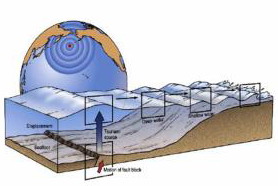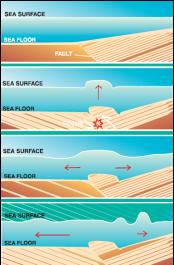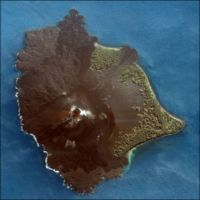Prior to the 1950s it was not commonly recognized that events other than earthquakes could cause a tsunami. However it is now known that landslides, volcanic eruptions and meteorite impacts can and have caused tsunamis. As emphasized in earlier pages, the trigger for initiation of Tsunami is the displacement of a large amount of water either on the surface of the ocean or more commonly on the ocean floor.
Earthquakes
Earthquakes are the most
common cause of tsunamis, accounting for close to 90% of them including the 2004
Asian Tsunami. Subduction earthquakes are the typical form of quake associated
with the requisite water displacement of tsunamis. They occur in subduction
zones, where two tectonic plates meet with one sliding underneath the other.
When these plates move, the top plate is violently forced upward displacing the
surrounding water and initiating a wave.
http://www.tsunami.noaa.gov/tsunami_story.html
Land slides
Land slides, either deep-sea or surface
can also cause a rapid displacement of a large volume of water resulting in a
tsunami. The largest wave on record
was caused by a massive landslide in

http://www.extremescience.com/BiggestWave.htm
Volcanic eruptions
Volcanoes
are another source of tsunami waves, which like landslides can be underwater, or
on the surface. Pyroclastic flows which are a fluidized mixture of ash, rock,
and gases and can flow away from a vent at up to 700 km/hr, surge toward the
ocean floor to create the wave. In 1883 a massive eruption on the Indonesian


